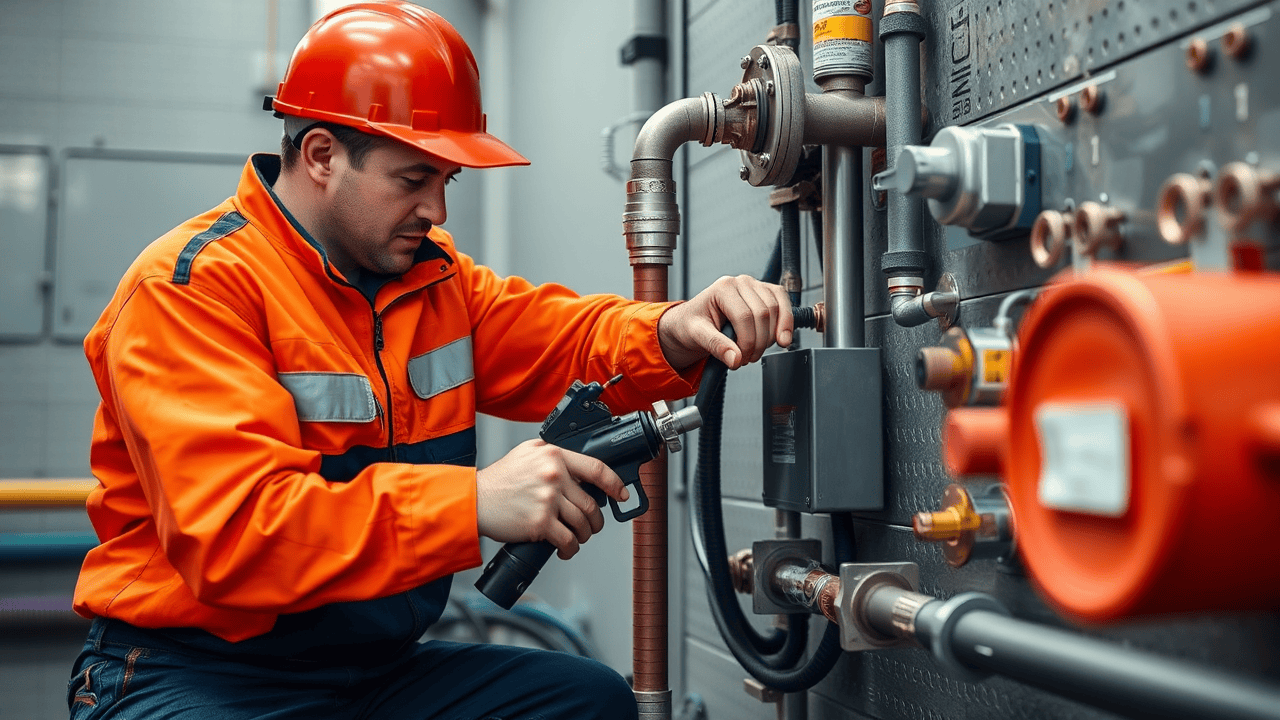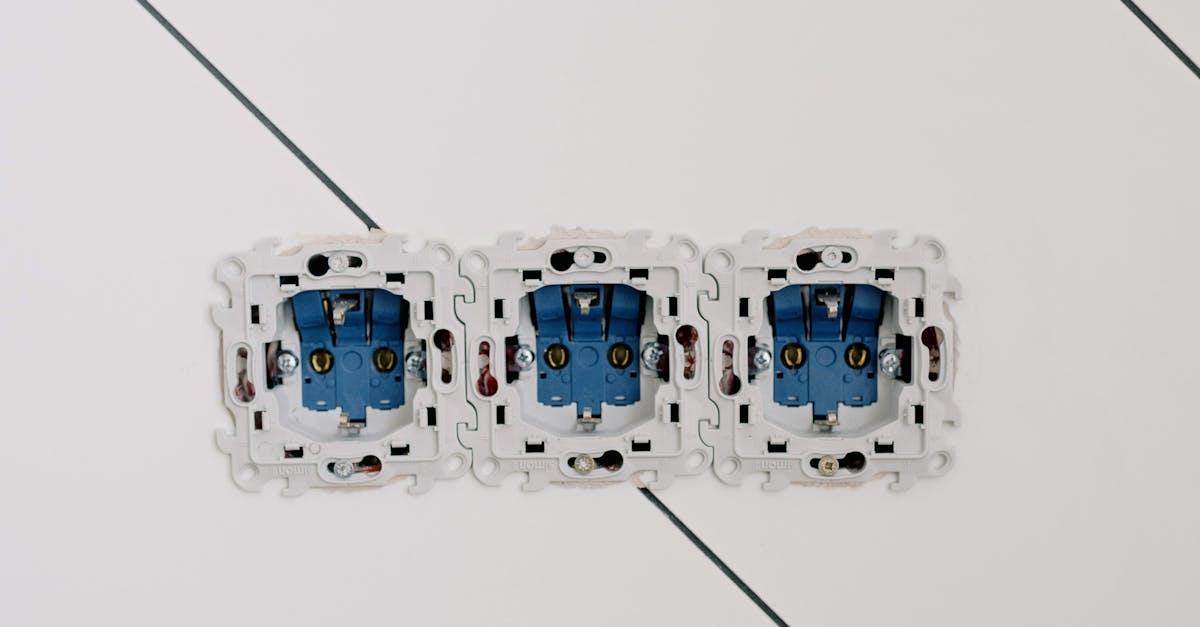
Tools and Equipment Needed
When embarking on a gas line installation project, having the right tools and equipment is crucial for ensuring safety and efficiency. Essential items include a pipe wrench, adjustable wrench, and pipe cutters, which help in maneuvering and cutting gas pipes accurately. A gas leak detector is also vital for identifying any leaks that may occur during or after the installation process. Using proper safety gear, such as gloves and goggles, can prevent injuries while working with gas lines.
In addition to basic tools, certain equipment can enhance the installation experience. A pressure gauge is important for testing the integrity of the gas line after installation. Teflon tape or pipe joint compound ensures that connections are sealed properly, preventing future leaks. Homeowners considering DIY projects may also look into local services like gas line installation and repair Eugene, Oregon, for guidance on tool selection and safety practices.
Essential Items for Gas Line Installation
Successful gas line installation relies on having the right tools and materials. Essential items include a pipe wrench for tightening fittings, PTFE tape for sealing joints, and a pipe cutter to ensure clean cuts. Also, a gas leak detector is necessary to verify the system's integrity after installation. Having appropriate personal protective equipment, such as gloves and goggles, improves safety during the process. Knowledge of the local building codes is crucial to ensure compliance and avoid potential legal issues.
In addition to tools, the materials used are vital for a secure installation. Rigid pipe, flexible pipe, and fittings need to be selected based on the installation's specific requirements. Adequate support brackets and a reliable gas meter are also important components. Homeowners looking for guidance may find resources related to gas line installation and repair in Oregon useful. Accessing local expertise can assist in understanding the necessary standards and practices while enhancing the overall safety and functionality of the gas line system.
Common Mistakes to Avoid
Navigating the installation of a gas line can be fraught with errors that may compromise safety and efficiency. One common mistake is underestimating the complexity of the task. Many homeowners overlook the need for precise measurements and calculations. This can lead to improper layouts or sizes of pipes, which could create leaks or pressure issues in the system. Familiarizing oneself with local regulations is essential to avoid penalties or the need for costly rectifications.
Another frequent pitfall involves neglecting to use the appropriate materials and tools for the job. Some may attempt to cut corners by using inferior products, which can ultimately result in hazardous situations. This underscores the importance of selecting high-quality components tailored for gas line installation and repair, such as in a project focused on “Gas line installation and repair Eugene, Oregon.” Ensuring all fittings, pipes, and pressure gauges meet industry standards can prevent future mishaps and ensure a safe and reliable gas system.
Pitfalls During the Installation Process
Homeowners often underestimate the complexities involved in installing a gas line. One common pitfall is inadequate preparation, which can lead to incorrect measurements and misalignment. Additionally, failure to check local codes and regulations can result in serious setbacks. Ignoring these guidelines not only increases the risk of safety hazards but can also incur fines or demand costly adjustments later on. Homeowners should prioritize thorough research and make sure they understand the requirements before beginning the installation process.
Another frequent mistake is the use of improper tools and materials. Some may attempt to use makeshift solutions or substitute components, thinking they can save time and money. This can lead to leaks and other dangerous situations. Proper tools and materials are essential for ensuring a secure and compliant installation. Those considering a professional service should explore options, recognizing that expertise in gas line installation and repair in Eugene, Oregon, is crucial for achieving a successful outcome.
Cost Considerations for Gas Line Installation
When planning for gas line installation in Texas, homeowners should consider the costs associated with materials, labor, and any necessary permits. The price can vary significantly depending on the length of the gas line, the complexity of the installation, and local market rates for contractors. Homeowners should budget for high-quality materials, such as piping and fittings, which can contribute to overall safety and longevity. However, attempting to skimp on these components may lead to more significant expenses in the long term due to repairs or replacements.
Hiring a professional for gas line installation is advisable to ensure compliance with safety standards and local regulations. By investing in skilled labor, homeowners can avoid costly mistakes that may arise from DIY installations. For those seeking expertise in gas services, searching for "Gas line installation and repair Eugene, Oregon" may provide options for qualified professionals who can assist in both installation and maintenance. It’s crucial to get quotes from multiple service providers to understand the market rates better and secure the best deal possible.
Budgeting for Materials and Labor
When budgeting for a gas line installation, it is crucial to factor in both materials and labor costs. The price of materials can vary significantly based on the size and complexity of the project. Components such as piping, fittings, and valves can add up, especially if there are specific requirements or regulations that must be followed. It's advisable to get estimates from several suppliers to ensure competitive pricing. Additionally, consider the cost of tools or equipment rentals, if needed, as they can impact the overall budget.
Labor costs are another critical component that should not be overlooked. Hiring a licensed professional is often necessary to ensure compliance with safety and building codes, which may incur higher fees than a DIY approach. However, opting for skilled labor can save money in the long run by avoiding mistakes and potential safety hazards. Homeowners should also explore regional service providers like those specializing in gas line installation and repair Eugene, Oregon, as this can provide insights into local pricing trends and allowances for any specific local regulations or conditions.
FAQS
Can a homeowner legally install a gas line in Texas?
In Texas, homeowners can install gas lines on their property; however, they must comply with local regulations and codes. It is often required to obtain a permit and have the work inspected.
What tools do I need to install a gas line?
Essential tools for gas line installation include a pipe wrench, Teflon tape, pipe cutters, a gas leak detector, and various fittings and connectors. Safety equipment, such as gloves and goggles, is also recommended.
What are some common mistakes to avoid when installing a gas line?
Common mistakes include not checking for gas leaks, using incorrect fittings, failing to secure the line properly, and not following local building codes. These can lead to dangerous situations and costly repairs.
How much does it typically cost to install a gas line in Texas?
The cost to install a gas line in Texas can vary widely, typically ranging from $15 to $25 per linear foot, depending on the length, complexity, and labor involved, as well as materials used.
Should I hire a professional for gas line installation?
While homeowners can install gas lines themselves, hiring a licensed professional is highly recommended. Professionals are familiar with local regulations, safety standards, and can ensure proper installation and avoid potential hazards.


